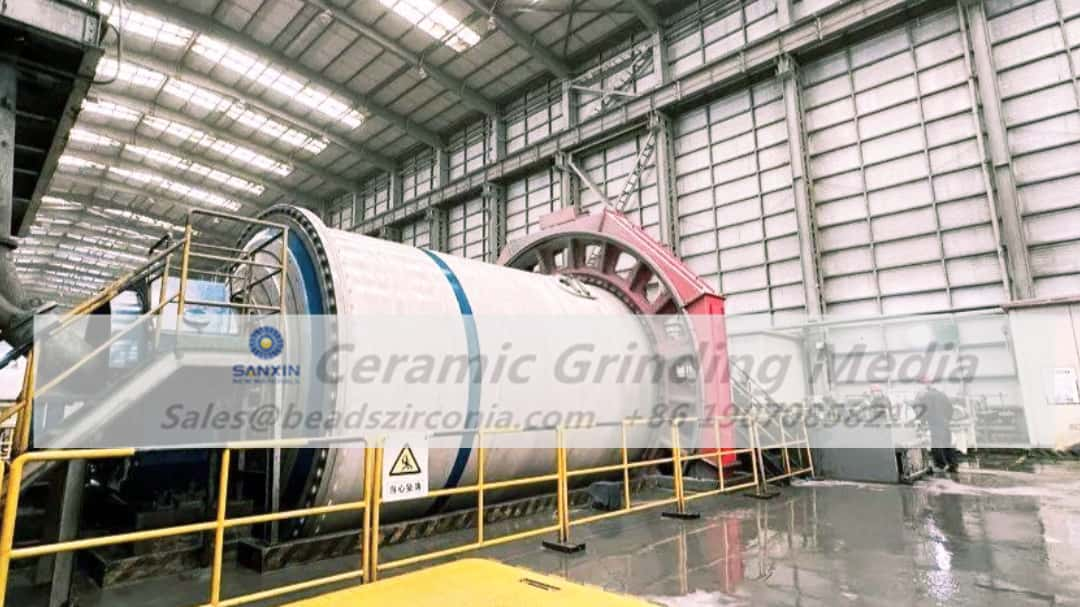With the long-term exploitation of mineral resources, the conflict between low-grade, fine, and complex ores and the demand for high-quality, efficient production has become increasingly prominent. Under the carbon peak and carbon neutrality goals, achieving energy savings and consumption reduction in mineral processing has become a necessary pursuit.
Grinding accounts for approximately 50% of the total energy consumption in beneficiation plants, making energy reduction in grinding a key focus for cost reduction and efficiency improvement.
Currently, most beneficiation plants use steel balls for grinding. However, practical experience has shown issues such as excessive over-grinding, iron contamination, high energy consumption, and noise. With the development and application of high-strength, wear-resistant composite zirconia balls, ceramic balls have emerged as a new grinding media. Initially used in vertical mills, ceramic grinding media have recently been applied in horizontal fine grinding mills, achieving remarkable results. Extensive research and practice indicate that compared to steel balls, nano-ceramic balls reduce grinding energy consumption, improve particle size distribution, effectively mitigate over-grinding, prevent iron contamination, enhance separation efficiency, and reduce media wear.
Building on existing research and practical results, this study focuses on two-stage ball mill feed, comparing the use of all-steel balls, all-ceramic balls, and a combination of steel and ceramic balls. The study examines ball loading, media filling rate, grinding concentration, grinding time, and grinding capacity. The evaluation index is the particle size distribution of the grinding products, and the conclusions will guide industrial applications.

The test used magnetite ore from a two-stage ball mill feed. The feed and discharge particle size distribution was analyzed, with results shown in Table 1. The test defines +0.15 mm as under-grinding, 0.019–0.15 mm as qualified particles, and -0.019 mm as over-grinding.
From Table 1, it can be seen that after secondary grinding, the content of +0.15 mm particles decreased from 10.62% to 3.23%, while the content of -0.019 mm particles increased from 15.58% to 21.85%. The iron grade dropped from 65.21% to 63.63%, and the iron distribution rate increased from 16.78% to 23.04%, indicating a significant over-grinding issue in the second grinding stage. The over-ground mineral particles are prone to loss during the magnetic separation process.
The grinding test was conducted using an HLXMQ-ϕ240 × 90 conical ball mill, with three different grinding media: all-steel balls, all-ceramic balls, and a combination of steel balls and nano-ceramic balls (hereinafter referred to as mixed balls).
With a fixed feed amount of 500 g, a grinding time of 3 minutes, a media filling rate of 36%, a grinding concentration of 67%, and a mill speed of 96 r/min, seven different ball-loading schemes using nano-ceramic balls were tested (Table 2), and the results are shown in Table 3.
From Table 3, it can be seen that using different nano-ceramic ball loading schemes resulted in minimal variation in the content of the qualified particle size fraction. However, the No. 3 ball-loading scheme achieved the highest grinding efficiency (94.50%) and the best grinding performance. While ensuring sufficient grinding capacity, it also improved the particle size distribution of the ground product and reduced the generation of over-ground particles. Therefore, the optimal nano-ceramic ball-loading scheme consists of a mass ratio of ϕ30 mm, ϕ25 mm, and ϕ20 mm balls at 50%:30%:20%.
With a fixed feed amount of 500 g, a grinding time of 3 minutes, a media filling rate of 36%, a grinding concentration of 67%, and a mill speed of 96 r/min, seven different steel ball loading schemes were tested (Table 4), and the results are shown in Table 5.
From Table 5, it can be seen that different steel ball loading schemes resulted in varying grinding performance. The No. 6 loading scheme performed the best, with a mass ratio of ϕ25 mm, ϕ20 mm, and ϕ15 mm steel balls at 30%:40%:30%. The -0.075 mm content reached 84.86%, and the grinding efficiency was 90.37%. Therefore, for subsequent tests, the steel ball loading scheme was set to a mass ratio of ϕ25 mm, ϕ20 mm, and ϕ15 mm at 30%:40%:30%.
To explore the impact of different grinding media on the characteristics of the ground product, a comparison was conducted under their respective optimal grinding conditions, with the results shown in Table 8.
As seen in Table 8, under optimal grinding conditions, the nano-ceramic balls and mixed balls achieved higher yields of qualified particle sizes, a greater proportion of newly generated -0.075 mm particles, and higher grinding efficiency compared to steel balls. This indicates that they deliver superior grinding performance.

Submit your demand,
we will contact you ASAP.

Sanxin New Materials Co., Ltd. focus on producing and selling ceramic beads and parts such as grinding media, blasting beads, bearing ball, structure part, ceramic wear-resistant liners, Nanoparticles Nano Powder

